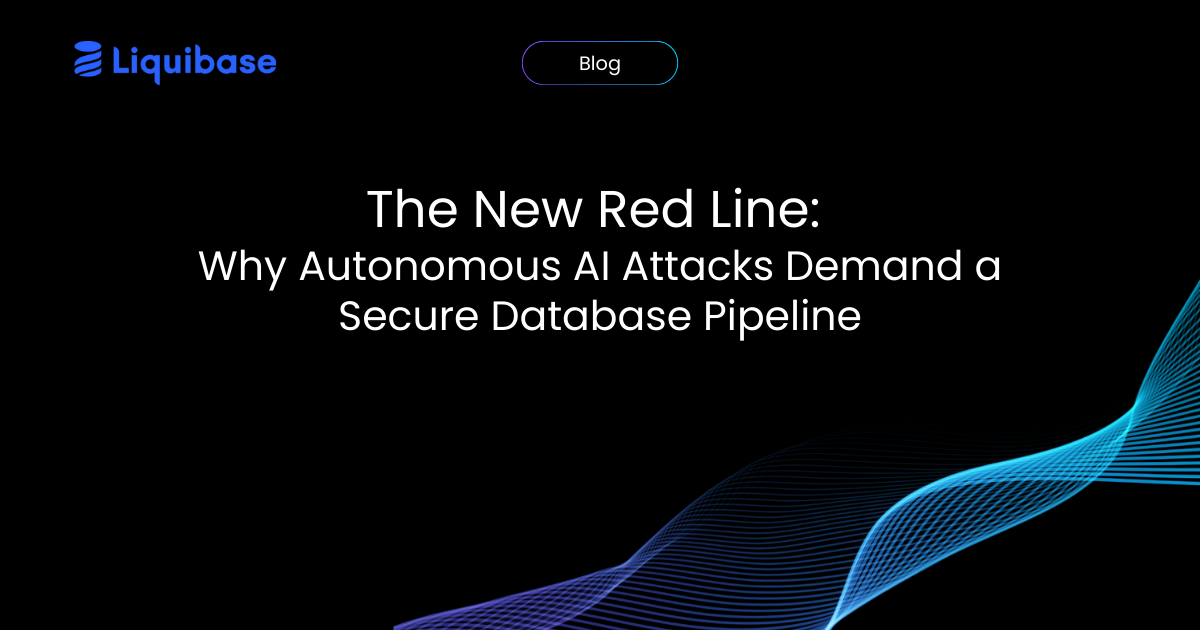The Hidden Risks of Open Source: The OWASP Top 5
August 20, 2025
See Liquibase in Action
Accelerate database changes, reduce failures, and enforce governance across your pipelines.

Key takeaways:
Open source solutions (OSS) are a popular way to get started with a solution for low cost and many organizations have open source solutions deployed in their enterprise environments. OWASP, a non-profit foundation dedicated to improving software security, recently released a list of top vulnerabilities in open source software, These common vulnerabilities include:
- Exploitation of known vulnerabilities compounded by extended fix release and patch cycles.
- The compromise of legitimate software packages.
- Name confusion attacks that can expose organizations to compromise.
- Unmaintained software
- Outdated software
Open source software is the bedrock of modern software development, but it can also be a weak link in the software supply chain. Here are the biggest risks and tips on how to safely use OSS components.
Introduction
For years, open source solutions (OSS) have played a central role in DevOps and database operations, thanks to flexibility, low cost, and global community support. But amid heightened regulatory scrutiny, operational risk, and the need for rigorous auditability, open source tools are increasingly being evaluated for potential security risk and as avenues for potential attacks.
While OSS solutions are ideal for users who value flexibility, autonomy, and control, they’re becoming a riskier bet for regulated industries. Not only do OSS tools require far more effort to set up, there’s a much higher technical investment involved, and tradeoffs in advanced features and support. Recently OWASP posted the top vulnerabilities for open source software. This article, the first in a series, examines what the top 5 risks are and what organizations should watch out for.
.png)
#1 OSS-RISK: Known Vulnerabilities (Security related risk)
According to the 2025 Verizon Data Breach Report, exploitation of vulnerabilities as an initial access step for a data breach grew by 34% and now accounts for 20% of breaches.Organizations are increasingly finding these vulnerabilities are being introduced by well-meaning developers, partners, and third-parties. Developers may inadvertently introduce vulnerable code into a component version. Details about such vulnerabilities are publicly disclosed as a CVE and users need to wait for the community to develop a fix. Even if the community is actively engaged in maintaining the codebase, the majority of vulnerabilities remain unpatched.
Why is patching OSS software a challenge?: For the majority of well-maintained OSS software, a typical release cycle for a critical severity patch is 28-40 days. Once the fix is released, organizations have to modify and test the patch before applying it to their systems. This process typically takes 1-2 months and sometimes efforts to apply the fix are unsuccessful, leaving systems vulnerable. Over time, these patches add a significant maintenance burden to internal software development teams.
#2 OSS-RISK: Compromise of Legitimate Package (Security related risk)
Software supply chain security is no longer optional. Supply chain attacks increased 431% between 2021 and 2023 and are expected to continue to rise as software delivery becomes increasingly interconnected. Attackers are specifically targeting software supply chains comprising open-source and commercial software dependencies, third-party APIs, and DevOps toolchains that deliver legitimate software. This can involve account hijacking of project maintainers to inject malicious code or upload compromised versions to official repositories. Another tactic is exploiting vulnerabilities in package repositories to manipulate or replace legitimate packages. For database change management, given the critical nature of financial data and reliance on open-source solutions, a supply chain attack could lead to unauthorized access, data manipulation, or system outages.
Financial institutions and companies in highly-regulated industries in particular must vet open-source components and continuously monitor their software supply chain. SBOMs play a crucial role in mitigating software supply chain risks by providing visibility into the components and dependencies of software. This visibility allows organizations to identify and address potential vulnerabilities before they can be exploited. This enhanced visibility into what’s in a piece of software makes it easier to identify dependencies and vulnerabilities and manage risk.
#3 OSS-RISK: Name Confusion Attacks (Security related risk)
As part of an attack, attackers may create components whose names resemble names of legitimate open-source or system components (typo-squatting), suggest trustworthy authors (brand-jacking), or play with common naming patterns in different languages or ecosystems, according to OWASP.
Deceptive Tactics in Component Naming can increase risk by providing an avenue to distribute an attack. The impacts of this technique can include the execution of malicious code which can have severe and far-reaching consequences, impacting not only the end-user but also the entire organization responsible for developing and operating the dependent software.
Potential Impact to End-User Systems includes data theft, system compromise, ransomware attacks, and botnet inclusion. These types of risks can impact organizational systems as well including compromising build stations and developer workstations. Using techniques such as object-oriented drift detection at the database level can help organizations identify potential compromises earlier and can help minimize the impact of an attack. We increasingly see organizations monitoring for this type of drift as part of their layered defense strategy.
#4 OSS-RISK: Unmaintained Software (Operational and security related risk)
When an open-source software (OSS) component or version is no longer actively developed, patches for functional and non-functional bugs may not be provided in a timely manner, if at all, by the original project or community. Consequently, organizations deploying such OSS must develop their own fixes, create workarounds, or implement compensating controls to meet regulatory and compliance requirements. This can create additional security, operational, and audit expenses. These considerations extend to the database layer as well.
#5 OSS-RISK: Outdated Software (Operational and security related risk)
For organizations that have deployed a branch of an OSS project, maintaining that older version may become increasingly burdensome. A project may use an old, outdated version of the component (though newer versions exist). Community supported patches and updates may follow a fix-forward policy, leaving older versions increasingly vulnerable.
To maintain the most recent OSS version, organizations must be prepared to continuously update software packages across the entire organization, modify releases and deployments to maintain integrations and compatibility, integrate these changes into their audit and compliance documentation, and fully test the environment. Many teams are ill-staffed to manage such burdens.
Conclusion
OSS tools have powered software solutions including database change management for many years, but we are fast reaching a tipping point where the flexibility and cost of OSS needs to be evaluated against the risks involved. Leaders who want to future-proof their stack should consider the long-term impact of their database strategy on compliance, audit readiness, and operational resilience.
Leveraging open source projects in your organization? Remember:
- Compliance automation: OSS places the burden on internal teams; Liquibase Pro builds compliance into every workflow.
- Operational efficiency: Automation reduces errors, accelerates delivery, and cuts audit prep time in half.
- Enterprise support: Liquibase Pro offers tested integrations, expert help, and built-in governance.
Compliance and speed must coexist, so vote for enterprise-grade solutions that deliver both.
Your database strategy is no longer just about deployments – you must ensure resilience, audit readiness, and trust.
Ready to see Liquibase Secure in action?
Frequently Asked Questions
Q1. How does Liquibase Secure compare to open-source alternatives for compliance and support?
A1: Liquibase Secure delivers automated compliance, robust audit trails, and expert support—reducing internal workload and regulatory risk compared to unsupported Liquibase Community.
Q2. Can Liquibase Secure be integrated with our existing DevOps and CI/CD workflows?
A2: Yes. Liquibase Secure integrates with leading CI/CD platforms, supports pre-tested drivers, and fits seamlessly into modern DevOps pipelines.
Q3. What does onboarding and implementation look like?
A3: Liquibase offers dedicated onboarding support, expert training, and proven frameworks—typically getting enterprise teams fully operational in weeks, not months.



.png)


.png)
.png)
.png)





